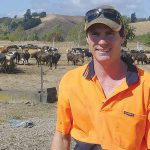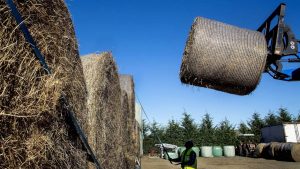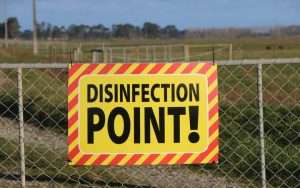
In its latest update on the attempted eradication of the disease, the Ministry for Primary Industries said 810 compensation claims had been made.
Of those, 504 were completed or had part payments made. The total value of claims assessed stood at $61.7m.
The Government announced last year it would cull around 152,000 cattle in an effort to eradicate the disease. Almost 87,000 have been culled so far.
The plan was expected to cost close to $1 billion, with farmers paying about a third and the Government picking up the rest. Much of that money would go to compensation.
As the eradication programme rolls on, an online tool has been launched to help dairy farmers understand their M. bovis risk.
The Dairy Risk Assessment tool was developed by New Zealand veterinary group XLVets to help farmers establish and manage the risk on their farm.
New Zealand Veterinary Association’s (NZVA) chief veterinary officer Helen Beattie said the dairy season was at a critical point and farmers should talk to their vets about using the tool.
“It’s a critical stage in the season when farmers may be considering buying or selling herds, sharemilkers may be considering moving to new contracts, and contract milkers and managers are considering next season’s job,” she said.
“Other than feeding raw milk, the main risk factor in M. bovis spread is stock movement. Farmers should talk to their veterinarian about a dairy risk assessment consultation before making decisions about buying a herd, or moving cattle on or off their farm.”
Beattie said vets were trusted on-farm biosecurity advisors, with an in-depth understanding of farm systems and animal diseases.
“An understanding of both is required to make informed recommendations on changes that can be made to the farm system that are practical and will have a real impact on reducing disease risk on-farm,” she said.
“The DRA is informative, affordable and it’s also faster and safer to carry out than surface-swabbing individual animals, which is required for laboratory testing. Individual negative [or not detected] test results are of limited value in understanding a herd’s true M. bovis infection status.”
The impact on a farming operation of unwittingly introducing M. bovis, leading to testing and potential culling, was huge, Beattie said.
“Using a simple tool like this will hopefully mean the spread of disease is reduced and as few farmers as possible in New Zealand have to endure such stress.”
If successful, New Zealand’s eradication would be a world first as the disease is present in most dairying countries, and farmers have learned to manage it.
First identified here in 2017, M. bovis is a bacterial disease which can cause serious animal welfare and productivity issues.
Cattle with the disease often develop severe pneumonia and untreatable mastitis but it is harmless to humans and is not transmitted through meat or milk.
As of Friday there were 33 properties infected with M. bovis nationwide, with the South Island the most affected.
There were 18 infected properties in Canterbury, six in Otago, two in Southland and one in Tasman.
In the North Island, there were two infected properties in Manawatū, three in Waikato and one in Northland.
Another 41 properties nationwide have been issued with restricted place notices which prohibit unauthorised movements of farm stock and other risk goods on or off the property.
























